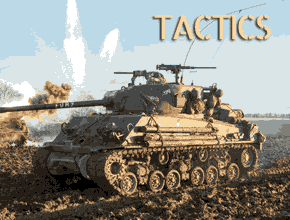Based on Strv m/42 EH Bild-Lago medium tank, this tank hunter inspired by the German Jagdpanther and Soviet SU-85 was conceived in 1944. Wuth the advantage of a powerful 75 mm AA gun, the first version was originally built without a roof in 1946, but the Army Equipment Administration rebuilt these in the 1950s mainly to protect the crews from shrapnel and later for NBC protection, and from 1963 they received new engines and transmission to stay active until the 1970s.
The m/42 tank hunter variant, which shared its chassis with the Landsverk Lago, became more urgent as 1941 went on without a satisfactory counter. The m/42 was armed indeed by a 75 mm (2.95 in) m/41 L/34 gun unable to penetrate potential adversaries albeit with special ammunition at close distance. There was already an AA gun in service with the Swedish forces that could fit the bill thanks to its high velocity, so adapting it to self propelled use became a possible path to success.
There was indeed no time to develop a realistic turret to house it on the existing chassis so the casemate was an easy choice. Engineers had not to see further than the StuG III and StuG IV for inspiration, and they obtained a few examples to create a roughly similar vehicle. In 1942 already Landsverk became the prime contractor for this tank destroyer project, received all funding, and managed to design a casemated vehicle on the chassis of the new Stridsvagn m/42. However delays amounted, notably to adapt the chosen Bofors 75 mm Model 1929 in its latest Swedish variant luftvärnskanon m/30, to the point if the basic vehicle was ready by mid-1942, there was no way to include the main gun yet, not to design a satisfactory mount.
Thus was born the Pansarvärnskanonvagn m/43 (Pvkv m/43), which final working design was tested and accepted in 1943, hence the name, bu would need more years to mature. Eventually almost cancelled in 1945, it was maintained amidst tension with USSR, and it was accepted as Swedish tank hunter, manufactured between 1947 and 1948. The Strv m/42 fixed superstructure housed both the final gun variant called the 75mm Pvkan m/43 L/50.5 coaxial with a ball mounted m/36 light machine gun. Unlike the STUGs and more like improvized German tank hunters such as the Marder III, the casemate remained open-topped.
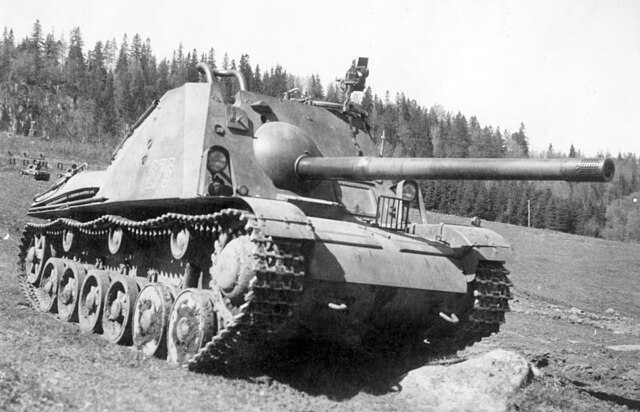
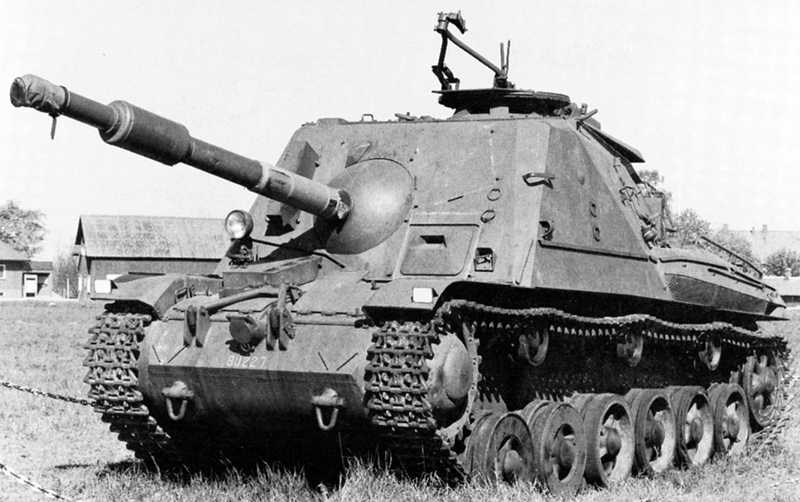
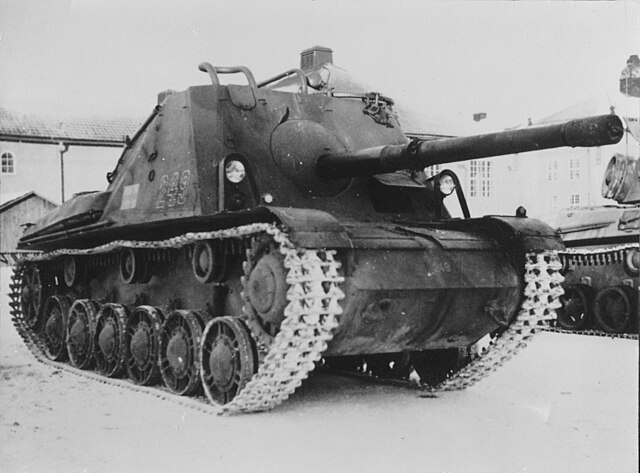
As designed its rome was to support vehicles with lesser firepower and engage heavy tanks of the enemy at a distance. Initially the m/43 was planned with a shorter luftvärnskanon 7.5 cm m/28 gun as a direct adaptation but it's performances were lacking. Later it was changed for a modified 7.5 cm Lvkan m/36 L/50, the longer barrel allowing for enhanced penetration. The developement of all this dragged on between 1942 and its order in 1944, but production difficulties, shortages and after May 1945, low priority meant the first deliveries didn't occur until 1946. The last Pansarvarnskanonvagn M/43 left the factory floor in 1948, after eighty-seven being delivered.
The primary armament was the modified 75mm luftvärnskanon m/36 antiaircraft gun, notably with recoil reduction measures, and of 50.5 caliber barrel to increase its muzzle velocity. Given the way the casemate was shaped, there was enough room to fit a giant ball to expect 15° degree up, down, left and right, which given the engagement distances was good enough. The Ammunition storage was of 56 rounds, which was also good, helped by the larhe size of the casemate. The secondary armament was a Ksp m/39 machine gun, initially coaxial and then relocated in the final design on a ring to be used as AA defence as well.
The Pvkv m/43 was powered by a Volvo A8B engine rated for 380 hp instead of the weaker Scania-Vabis 603/1 pair which developed 325hp on the m/42. However, the Volvo A8B engine was found unreliable. Speed was still average at 45 km/h. The Pvkv m/43 was equiped with a new Volvo VL 420 gearbox. The two front drive wheels were also reinforced to handle the extra weight of the new gun.
This modification protected the crew from shrapnel and sniper fire and later were usable fort further sealing to create an NBC protection. Other modifications included the installation of a gas ejector and new muzzle brake mid-way across the main gun, as well as a new gun mount for the gun to rest on while in travel. In 1957, the withdrawal of the earlier Strv m/41 light tank from frontline service meant their Scania-Vabis L603 engines were available to replace the unreliable Volvo A8B engine.
By December 1960, three prototypes were re-engineered with a pair of these at Landsverk and tested. The installation of two engines resulted in a more reliable vehicle but with a lower output of 320 hp versus 380 hp, and degraded performabces. Nevertheless, given the low avialability rate of these vehicles, order was given for a full conversion of all tank hunters by the end of 1961, a refit completed between 1963 and 1964.
Until the introduction of the Centurion in Sweden in 1953, the Pvkv m/43 remained the only vehicle capable of knocking out hostile tanks. In the 1950s, plans for an upgrade of the Pvkv m/43 was reported to 1963 with new engines, extending its useful life until the 1970s. After decommissioning, the cannons were recycled on coastal artillery positions and fortifications, defending the Swedish coast until 1995.
Development
The Pansarvärnskanonvagn m/43 (Pvkv m/43) was a tank destroyer developed by Landsverk AB in Sweden. The country was still neutral from 1940, and had to prepare for a possible invasion of Germany, or less likely, from the Soviet Union, which fielded thousands of tanks. As tank technology progressed during the war, it was clear in 1943 that Sweden's 1930s designs were now obsolete, ill-prepared to face the latest tanks in circulation such as the Panther and T-34/85. As a new medium tank, the Stridsvagn M/42 was being built, a whole family of chassis-derived versions was envisioned, comprising a tank hunter and an AA vehicle. The first would became the Pansarvarnskanonvagn M/43 an the second the Luftvarnsvarnskanonvagn M/43.The m/42 tank hunter variant, which shared its chassis with the Landsverk Lago, became more urgent as 1941 went on without a satisfactory counter. The m/42 was armed indeed by a 75 mm (2.95 in) m/41 L/34 gun unable to penetrate potential adversaries albeit with special ammunition at close distance. There was already an AA gun in service with the Swedish forces that could fit the bill thanks to its high velocity, so adapting it to self propelled use became a possible path to success.
There was indeed no time to develop a realistic turret to house it on the existing chassis so the casemate was an easy choice. Engineers had not to see further than the StuG III and StuG IV for inspiration, and they obtained a few examples to create a roughly similar vehicle. In 1942 already Landsverk became the prime contractor for this tank destroyer project, received all funding, and managed to design a casemated vehicle on the chassis of the new Stridsvagn m/42. However delays amounted, notably to adapt the chosen Bofors 75 mm Model 1929 in its latest Swedish variant luftvärnskanon m/30, to the point if the basic vehicle was ready by mid-1942, there was no way to include the main gun yet, not to design a satisfactory mount.
Thus was born the Pansarvärnskanonvagn m/43 (Pvkv m/43), which final working design was tested and accepted in 1943, hence the name, bu would need more years to mature. Eventually almost cancelled in 1945, it was maintained amidst tension with USSR, and it was accepted as Swedish tank hunter, manufactured between 1947 and 1948. The Strv m/42 fixed superstructure housed both the final gun variant called the 75mm Pvkan m/43 L/50.5 coaxial with a ball mounted m/36 light machine gun. Unlike the STUGs and more like improvized German tank hunters such as the Marder III, the casemate remained open-topped.



As designed its rome was to support vehicles with lesser firepower and engage heavy tanks of the enemy at a distance. Initially the m/43 was planned with a shorter luftvärnskanon 7.5 cm m/28 gun as a direct adaptation but it's performances were lacking. Later it was changed for a modified 7.5 cm Lvkan m/36 L/50, the longer barrel allowing for enhanced penetration. The developement of all this dragged on between 1942 and its order in 1944, but production difficulties, shortages and after May 1945, low priority meant the first deliveries didn't occur until 1946. The last Pansarvarnskanonvagn M/43 left the factory floor in 1948, after eighty-seven being delivered.
Design
The Pvkv m/43 was built on the chassis of the Stridsvagn m/42, which itself shared many eklements with the prewar Landsverk Lago. Its casemate design was large enough to accomodate the main gun, but remained open top to reduce weight, enhanced stability, only having straps for a tarpaulin as weather protection. The superstructure was forward of the engine bay, slight sloped on its front and side faces. It was operated by a crew of 4: Driver (chassis), commander, gunner and loader all in the casemate. Its protection was limited to small arms fire and shrapnel, around 8 mm, and 12 mm for the forward face, all welded and sloped.The primary armament was the modified 75mm luftvärnskanon m/36 antiaircraft gun, notably with recoil reduction measures, and of 50.5 caliber barrel to increase its muzzle velocity. Given the way the casemate was shaped, there was enough room to fit a giant ball to expect 15° degree up, down, left and right, which given the engagement distances was good enough. The Ammunition storage was of 56 rounds, which was also good, helped by the larhe size of the casemate. The secondary armament was a Ksp m/39 machine gun, initially coaxial and then relocated in the final design on a ring to be used as AA defence as well.
The Pvkv m/43 was powered by a Volvo A8B engine rated for 380 hp instead of the weaker Scania-Vabis 603/1 pair which developed 325hp on the m/42. However, the Volvo A8B engine was found unreliable. Speed was still average at 45 km/h. The Pvkv m/43 was equiped with a new Volvo VL 420 gearbox. The two front drive wheels were also reinforced to handle the extra weight of the new gun.
Production & Modification
In 1942, Landsverk was given an order for 87 Pvkv m/43 but delivery was still awaited in 1944, and so far a single workable prototype was ready. The delay were notably caused by main gun redesigns, but also the development of the new mechanical gearbox, which was not ready before late 1945. In 1954, the Army Materiel Administration after use reports concluded tht in case of war, likely with the Soviet Union, shrapnel bursts were a serious danger to consider, and all Pvkv m/43 were rercalled in workshops to be equipped with an armour roof over the open superstructure.This modification protected the crew from shrapnel and sniper fire and later were usable fort further sealing to create an NBC protection. Other modifications included the installation of a gas ejector and new muzzle brake mid-way across the main gun, as well as a new gun mount for the gun to rest on while in travel. In 1957, the withdrawal of the earlier Strv m/41 light tank from frontline service meant their Scania-Vabis L603 engines were available to replace the unreliable Volvo A8B engine.
By December 1960, three prototypes were re-engineered with a pair of these at Landsverk and tested. The installation of two engines resulted in a more reliable vehicle but with a lower output of 320 hp versus 380 hp, and degraded performabces. Nevertheless, given the low avialability rate of these vehicles, order was given for a full conversion of all tank hunters by the end of 1961, a refit completed between 1963 and 1964.
Until the introduction of the Centurion in Sweden in 1953, the Pvkv m/43 remained the only vehicle capable of knocking out hostile tanks. In the 1950s, plans for an upgrade of the Pvkv m/43 was reported to 1963 with new engines, extending its useful life until the 1970s. After decommissioning, the cannons were recycled on coastal artillery positions and fortifications, defending the Swedish coast until 1995.
Pansarvarnskanonvagn M/43 specs. | |
| Dimensions (L-w-h) | 6.26 (7.46 m with cannon) x 2.35 x 2.62m |
| Weight | 25 tons (23 tons) |
| Crew | 4 men |
| Propulsion | Volvo A8B, 380 hp 340 hp, GBX Volvo VL 420. |
| Propulsion | 2x Scania-Vabis 603, 320 hp, Gbx Landsverk S-8082 |
| Top speed | 45 km/h max (42 km/h) |
| Range | c600 km |
| Armament | 7.5 cm pvkan m/43 L/50.5 75 mm, 8 mm ksp m/39 |
| Suspensions | Torsion Bars |
| Armor | Fully welded |
| Production | 87 1947-48 |
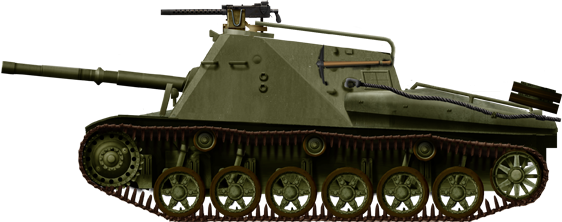
Pansarvarnskanonvagn M/43
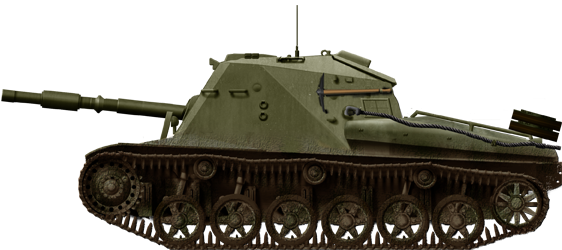
Late Pansarvarnskanonvagn M/43, covered with new engine
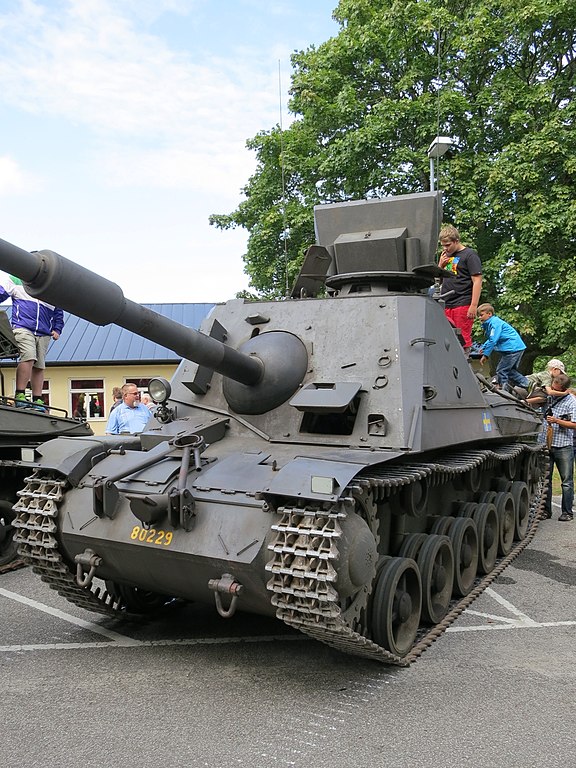
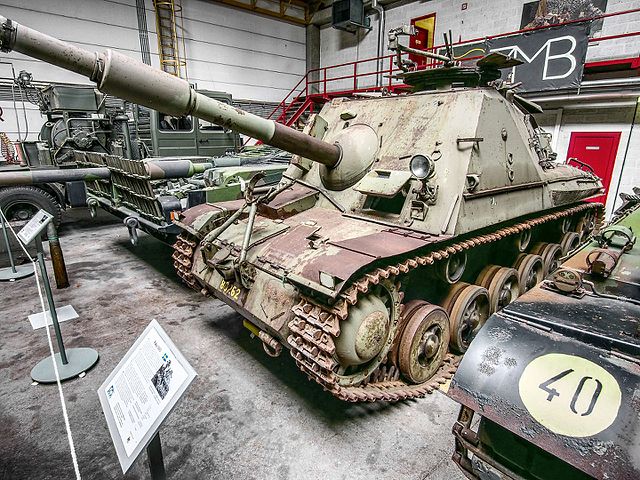
Sources
landskrona.segotlandsforsvarsmuseum.se
ointres.se
europeana.eu
digitaltmuseum.se pansarvarnskanonvagn-m-43
pansarvarnskanonvagn-m43
Pansarvaernskanonvagn-m-43
pansarvarnskanonvagn-m-43
smhs.com.dinstudio.se
en.wikipedia.org
wikipedia.commons
In 3D
Video
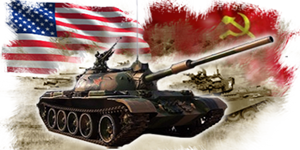
Cold War Tanks


































Cold war tanks posters

Cold War Main Battle Tanks
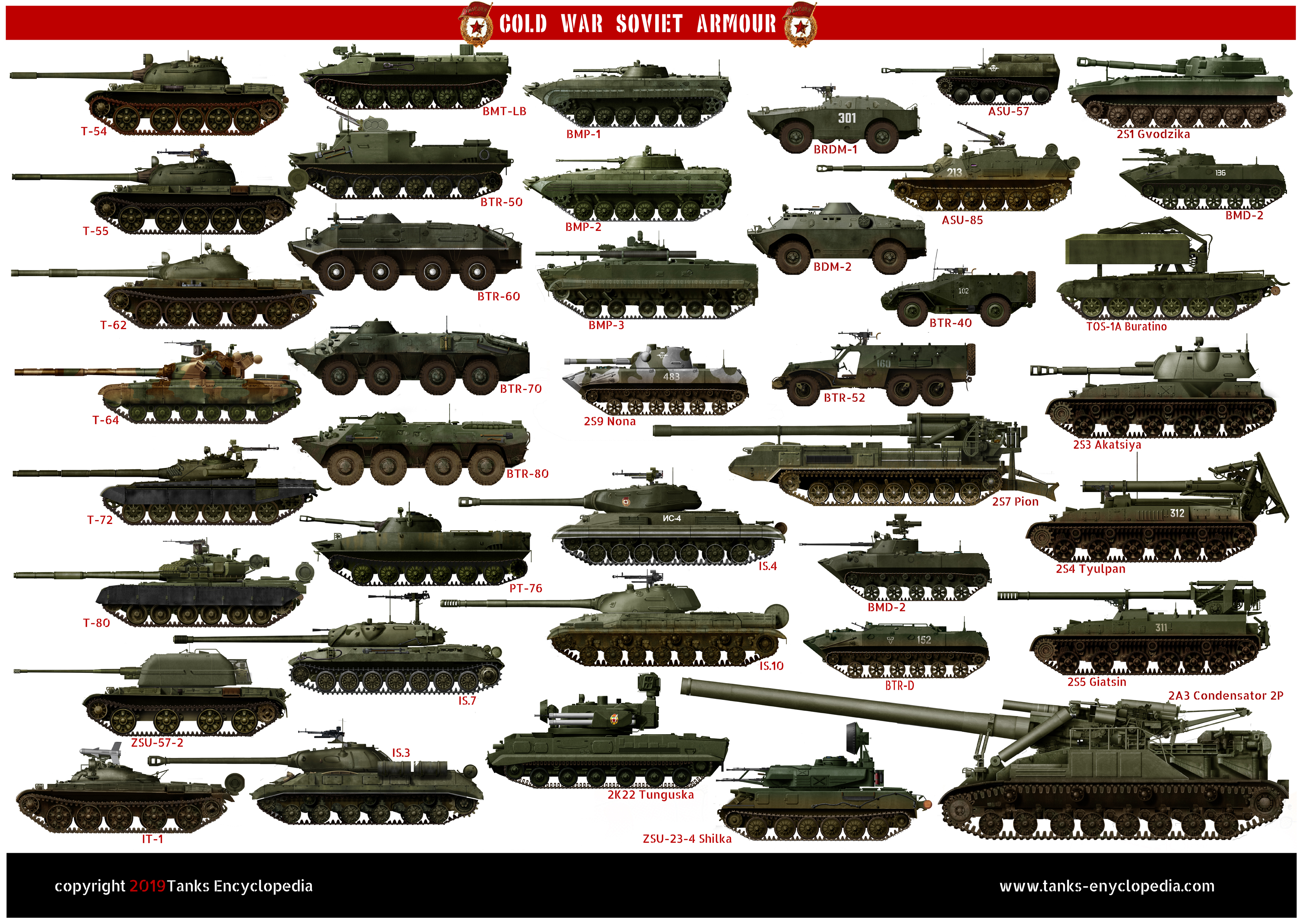
Cold War Soviet Army
Museums, Movies, Books & Games
The Tanks and Armor in pop culture
Tanks and armored vehicles in general are only really grasped when seen first person: The mass, the scale, it's all there. Explore also the way tanks were covered in the movie industry, in books and in video games.Movies:
Best tanks movie on warhistoryonline.com
On imdb.com
On bestsimilar.com/
miltours.com
liveabout.com/
watchmojo.com
Video Games:
pcgamesn.com
historyhit.com
levvvel.com
vg247.com/best-tank-games
mmobomb.com/
alienwarearena.com
